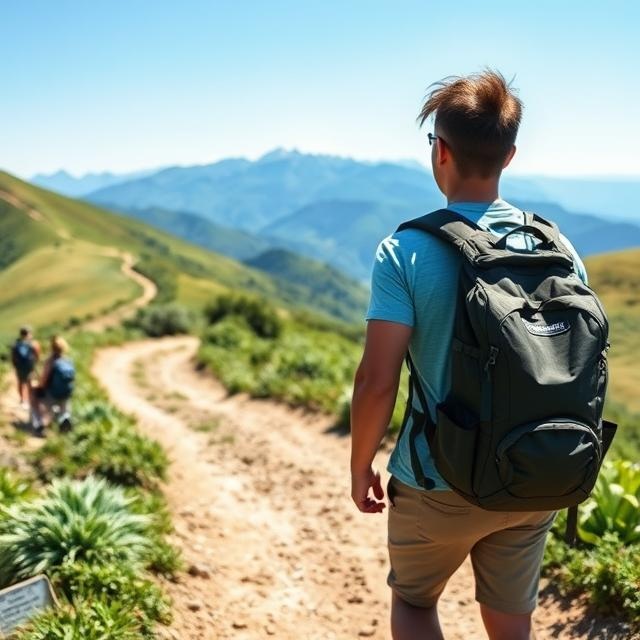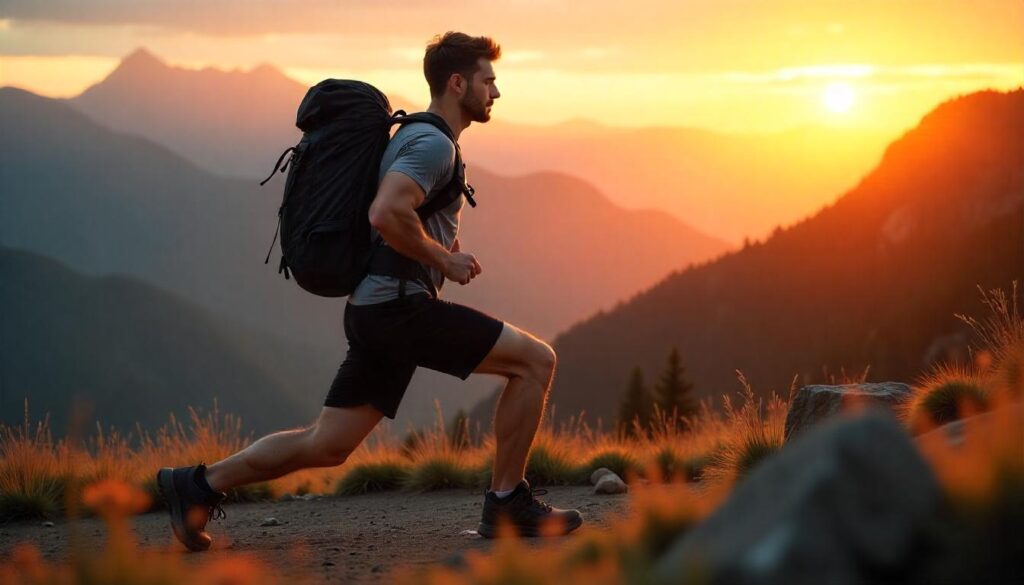
Survival stories have a way of gripping us like no other. They pull us into the raw, unforgiving power of nature, forcing us to ask: What would I do in that situation? Whether it is a lone hiker pinned under a boulder, a sailor adrift in an endless ocean, or an adventurer stranded in a frozen wasteland, these real-life survival stories push the limits of human endurance. They are not just tales of luck—they are testaments to resilience, instinct, and the will to survive.
There is something deeply human about the need to overcome impossible odds. The psychology of survival is a fascinating study in itself. Some individuals, when faced with life-threatening situations, tap into an unshakable mindset that drives them to push forward no matter the circumstances. Experts suggest that mental toughness, adaptability, and quick decision-making are often more critical than physical strength. Those who stay calm, think strategically, and find ways to endure discomfort tend to have a higher chance of survival. In contrast, panic and hopelessness can be just as deadly as the extreme environments themselves.
Throughout history, incredible survival stories have emerged from every corner of the world. Some people have faced raging blizzards, relentless ocean storms, and deadly deserts, while others have been attacked by wild animals, trapped beneath rockslides, or left stranded in total isolation. These stories are not just about overcoming the odds; they serve as powerful lessons for hikers, adventurers, and anyone venturing into unpredictable terrain.
In this article, we will explore some of the world’s most famous survival stories, diving deep into the challenges, the choices, and the sheer determination that kept these individuals alive. Each story offers a unique insight into human endurance—whether through ingenuity, sheer willpower, or sometimes, making unthinkable sacrifices. But more than just recounting these harrowing events, we will also analyze the key takeaways, survival strategies, and the mindset shifts that can mean the difference between life and death in extreme situations.
As you read these true survival stories, you will not only be inspired but also gain a new appreciation for the importance of preparedness, resourcefulness, and mental strength. Whether you are an avid outdoor enthusiast or simply someone who appreciates the incredible resilience of the human spirit, these stories will leave a lasting impression.
True Survival Stories – The Greatest Real-Life Escapes
Survival stories have captivated people for centuries, showcasing the resilience of the human spirit in extreme conditions. From being stranded in the wilderness to drifting alone at sea, these true survival stories are testaments to sheer determination, resourcefulness, and luck.
Throughout history, famous survivalists have influenced how we approach wilderness survival, teaching invaluable lessons about mental strength, preparation, and adaptability. Their harrowing experiences serve as both cautionary tales and blueprints for survival strategies.
Let’s explore some of the greatest real-life escapes, where ordinary people endured unthinkable hardships and survived against all odds.
Wilderness Survival Stories – Nature’s Ultimate Test
Aron Ralston (127 Hours) – Trapped in a Canyon, Forced to Amputate His Own Arm
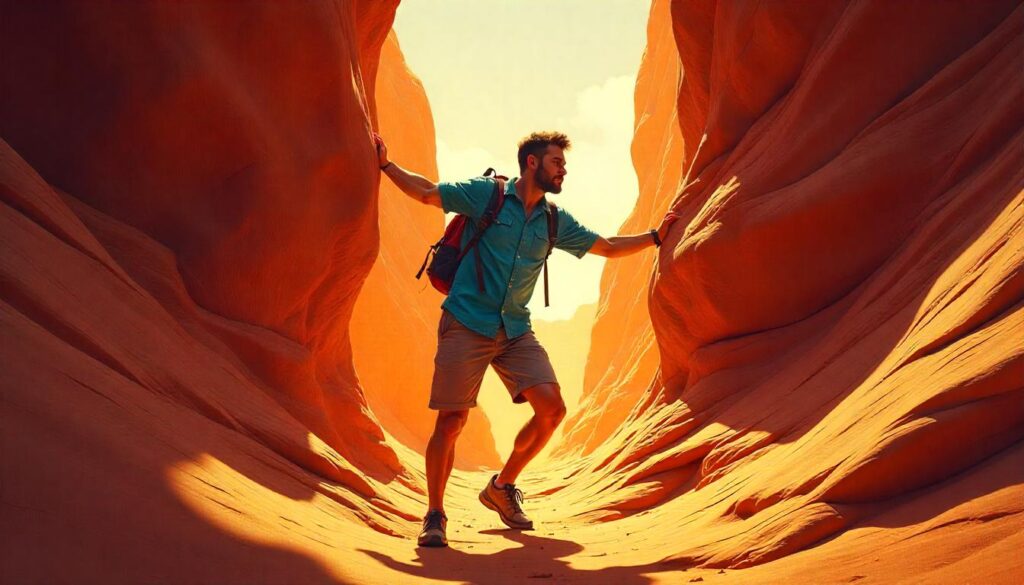
One of the most well-documented survival stories, Aron Ralston’s ordeal in 2003 became globally famous after the release of the movie 127 Hours.
Ralston, an experienced outdoor enthusiast, was canyoneering alone in Bluejohn Canyon, Utah, when a boulder suddenly shifted and pinned his right arm against the rock wall. With no way to call for help—having told no one about his route—he was completely alone in the remote desert.
For five excruciating days, he survived on sips of water, hoping for rescue. Realizing that help wasn’t coming and faced with dehydration and impending death, he made a brutal decision: amputate his own arm. Using a dull multi-tool knife, he first broke his radius and ulna bones before cutting through flesh, tendons, and nerves. After freeing himself, he had to rappel down a 65-foot drop and hike seven miles before being rescued.
His survival lessons emphasize the importance of:
- Telling someone your travel plans before heading into remote areas.
- Carrying a satellite phone or emergency beacon in case of emergencies.
- Mental fortitude—Ralston’s ability to endure excruciating pain ultimately saved his life.
Hugh Glass (The Revenant) – Mauled by a Bear, Crawled 200 Miles to Safety
The incredible true story of Hugh Glass, a 19th-century fur trapper, was the inspiration for the Oscar-winning film The Revenant.
In 1823, while exploring what is now South Dakota, Glass was viciously attacked by a grizzly bear. The bear tore his flesh, broke his ribs, and left him with a mangled leg. His expedition team, assuming he wouldn’t survive, left him behind with two men tasked with burying him. Instead, they abandoned him and took his weapons.
Despite grievous injuries, Glass crawled over 200 miles across the harsh wilderness, surviving on roots, berries, and even raw bison meat. He reached Fort Kiowa, where he fully recovered and sought revenge against the men who left him to die.
Glass’s survival strategies highlight:
- Sheer willpower—his survival was largely due to his refusal to give up.
- Knowledge of nature—he used his surroundings for sustenance and avoided predators.
- Determination and adaptability—even with severe injuries, he managed to navigate and hunt for food.
Mauro Prosperi – Lost in the Sahara for 9 Days, Survived on Urine and Bat Blood

Mauro Prosperi, an Italian endurance athlete, entered a six-day ultramarathon in the Sahara Desert in 1994. However, a massive sandstorm blew him off course, leaving him completely lost in the scorching desert.
With no food or water, he found refuge in an abandoned shrine, where he survived by drinking his own urine and eating bats. Desperate and dehydrated, he even attempted suicide, but the dry desert air prevented him from bleeding out.
After nine days of extreme heat and starvation, he was found by nomadic tribespeople, who saved his life.
His story emphasizes:
- Survival instincts—drinking urine and eating whatever was available helped him stay alive.
- Mental toughness—despite losing all hope, he found the strength to keep going.
- Situational awareness—he used abandoned structures for shelter and protection.
Extreme Survival Stories in the Wild
Douglas Mawson – Survived Brutal Antarctic Conditions Alone
In 1912, Australian explorer Douglas Mawson led an expedition into the Antarctic wilderness. After losing his team members to accidents and starvation, he faced extreme cold, hunger, and exhaustion.
With no food left, Mawson was forced to eat his own sled dogs and used makeshift crampons to traverse deadly glaciers. His skin peeled off due to frostbite, and his body was riddled with scurvy.
Despite losing his strength, he pressed on and miraculously reached his base camp—only to discover he had missed his rescue ship by a few hours. He had to survive another winter in Antarctica before finally being saved.
Mawson’s survival insights teach us:
- The importance of preparation—having proper gear and food is crucial in extreme environments.
- Endurance and mental resilience—his ability to push through pain and suffering kept him alive.
- The risks of solo expeditions—having a team increases the chances of survival.
José Salvador Alvarenga – 438 Days Adrift in the Pacific Ocean
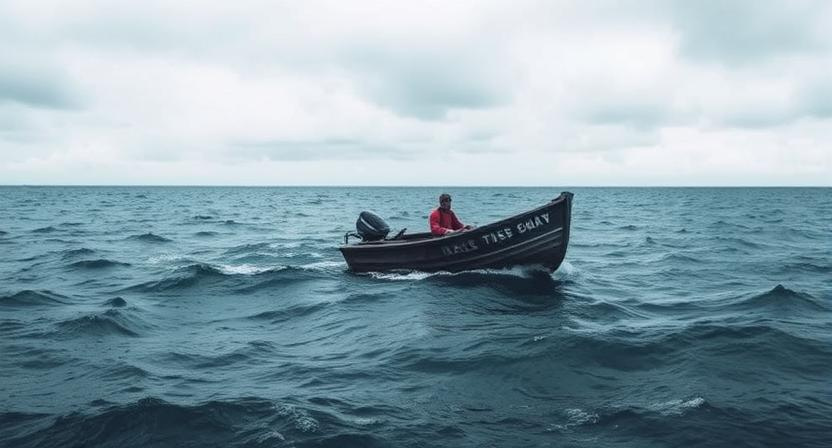
In 2012, fisherman José Salvador Alvarenga set out for a two-day fishing trip off the coast of Mexico. A sudden storm destroyed his boat’s motor, leaving him and his companion adrift in the Pacific Ocean.
With no navigation tools, he survived on raw fish, turtles, and rainwater. His companion succumbed to dehydration, leaving Alvarenga alone for over a year at sea. He finally washed up on the Marshall Islands, having drifted 6,700 miles.
His key survival takeaways include:
- Adapting to food scarcity—he ate whatever he could to maintain energy.
- Endurance under extreme isolation—staying mentally strong was critical to his survival.
- Using the environment wisely—rainwater and marine life provided sustenance.
Steven Callahan – 76 Days Alone at Sea
In 1981, sailor Steven Callahan’s boat sank in the Atlantic Ocean after hitting an unknown object. He escaped onto a life raft with minimal supplies and spent 76 days drifting at sea.
He used solar stills to purify seawater and a speargun to catch fish. Fighting sharks, dehydration, and starvation, he survived until a passing boat rescued him.
His experience highlights:
- The importance of emergency preparedness—having a survival kit made all the difference.
- Adapting to limited resources—rationing supplies kept him alive.
- Staying hopeful and resourceful—his mental resilience helped him push through.
Short Survival Stories – Miracles in the Face of Death
Not all survival stories require months of endurance or thousands of miles of travel. Some of the most incredible survival stories take place in short bursts of extreme danger, where survival comes down to seconds, luck, and sheer willpower. These short survival stories remind us that sometimes, survival is about making the right decision at the right moment or simply defying the odds.
Trapped and Rescued Against the Odds
Okene Harrison – 3 Days Underwater in an Air Pocket

In May 2013, Harrison Okene, a ship’s cook, was on board a Nigerian tugboat off the coast of West Africa when it suddenly capsized in rough waters. The vessel sank 100 feet below the ocean’s surface, trapping all 12 crew members inside.
While others tragically drowned, Okene miraculously found himself in an air pocket inside the wreckage. He survived for three days in total darkness, with no food and minimal oxygen, in freezing water, while listening to sea creatures feeding on his dead crewmates.
His survival was due to a combination of physics and human endurance. The air pressure at such depths compressed oxygen, allowing him to breathe longer than usual. However, the biggest challenge was hypothermia and oxygen depletion.
On the third day, a rescue diving team—sent to recover bodies—was shocked to find a living person. He was pulled from the wreck and required hyperbaric treatment for decompression sickness due to prolonged exposure to high-pressure conditions.
His survival takeaways include:
- Remaining calm in extreme fear—panic could have wasted his oxygen.
- Understanding survival physiology—he minimized movements to conserve oxygen.
- Rescue timing—if divers had arrived a day later, he would not have made it.
Robert Bohucki – 43 Days Lost in Australia’s Great Sandy Desert
In 1999, American tourist Robert Bohucki set out to explore Australia’s Great Sandy Desert alone, hoping for spiritual enlightenment. But his journey turned into a nightmare when he became disoriented and lost all sense of direction.
After his bike was found abandoned, a large-scale search effort took place, but after 12 days of no signs, authorities called off the search. However, his family hired private trackers, who eventually found him after 43 days.
He had survived by eating flowers and drinking muddy water, having lost 44 pounds (20 kg). His survival raised questions about human endurance, and he later credited his faith for helping him push through.
Lessons from Bohucki’s survival:
- Never travel alone into extreme environments without proper navigation gear.
- The human body can endure weeks without food but needs water to survive.
- Mental strength and willpower play a huge role in survival.
Yossi Ghinsberg – Lost in the Amazon for 3 Weeks
One of the most famous survivalists, Yossi Ghinsberg, became widely known for his unbelievable Amazon survival story, later turned into the movie Jungle.
In 1981, Ghinsberg, an Israeli backpacker, ventured into the Bolivian Amazon rainforest with three companions. However, they soon got separated, and Ghinsberg found himself completely alone in one of the world’s most dangerous ecosystems.
For three weeks, he survived without food, battling jaguars, venomous snakes, and endless rain. Hallucinations set in due to exhaustion, and at one point, he believed he was being guided by a companion who wasn’t there.
On day 19, a rescue team finally found him, weak and barely alive. His story later became an inspiration for survivalists and adventurers worldwide.
Key survival takeaways from Ghinsberg’s ordeal:
- Rainforests pose unique survival challenges—wet conditions, predatory animals, and disease.
- The human mind plays tricks under extreme stress and starvation.
- Never venture into extreme environments without proper planning and a survival plan.
The Science of Survival – What It Takes to Stay Alive
Survival isn’t just about luck—it’s about preparation, resilience, and knowledge. Many of the world’s most famous survival stories share common themes in psychology, decision-making, and endurance.
Key Survival Skills That Helped These Individuals Endure
- Water Procurement – Almost all survivors had to find alternative water sources (rainwater, dew, or even urine).
- Food Adaptation – Survivors consumed unconventional food sources (flowers, insects, fish blood).
- Shelter Creation – Keeping warm in extreme cold or finding shade in extreme heat was essential.
- Mindset Control – Panic can deplete energy and oxygen; mental resilience was key.
The Role of Mental Resilience in Survival Situations
Psychologists have studied why some people survive while others perish in extreme conditions. Studies suggest that:
- Positive mindset and hope increase survival chances.
- Panic and despair lead to fatal mistakes.
- Routine and goal setting (like rationing food) help maintain focus.
Why Some People Survive and Others Don’t – The Psychology of Survival
Experts suggest the difference between survival and death often comes down to:
- Situational awareness – Recognizing danger before it’s too late.
- Quick adaptability – Changing strategies when needed.
- Cognitive flexibility – Thinking outside the box to find solutions.
Survival Scenarios from Books, Movies & Podcasts
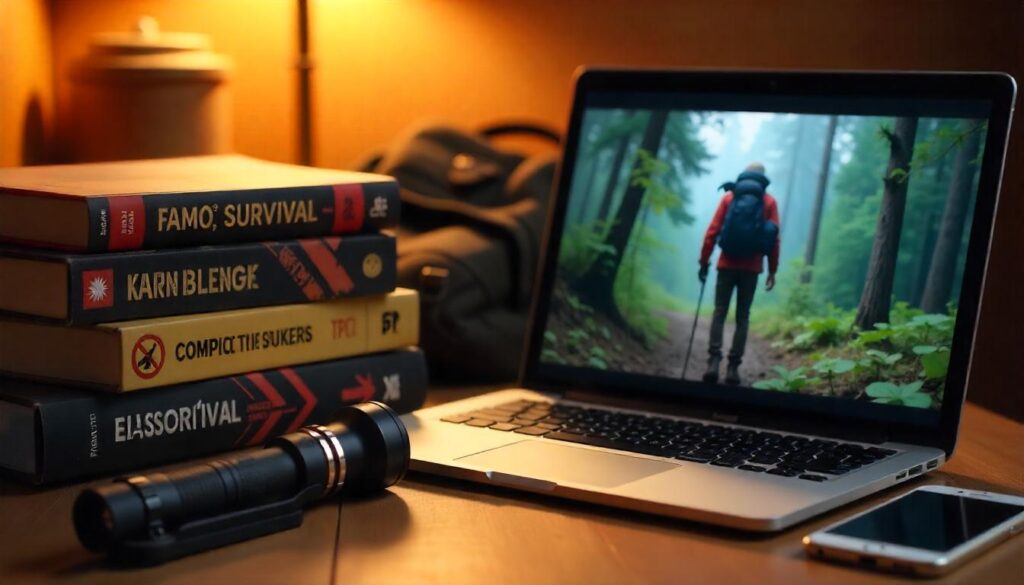
Real-life survival stories have inspired books, movies, and podcasts that bring these incredible experiences to a wider audience.
Best Books About Survival Stories – Real-Life Accounts of Survival
- Adrift: 76 Days Lost at Sea by Steven Callahan
- Between a Rock and a Hard Place by Aron Ralston
- Miracle in the Andes by Nando Parrado
Movies Based on True Survival Stories – Gripping Tales on the Big Screen
- 127 Hours (Aron Ralston’s story)
- The Revenant (Hugh Glass’s legendary survival)
- Jungle (Yossi Ghinsberg’s Amazon adventure)
Podcast Survival Stories – In-Depth Retellings of Extreme Survival Experiences
For survival enthusiasts, podcasts offer gripping firsthand accounts of extreme endurance:
- Out Alive – A podcast featuring true wilderness survival stories.
- Against the Odds – Chronicles real-life survival situations.
- The Moth – Survival Edition – Features personal survival experiences.
Lessons from the World’s Greatest Survival Stories

The world’s most famous survival stories serve as powerful lessons for hikers, adventurers, and anyone venturing into the unknown. From mountaineers stranded in sub-zero temperatures to lone survivors lost in the ocean for months, these stories reveal critical survival takeaways that can mean the difference between life and death.
Studying these true survival stories not only prepares us for potential dangers but also provides insight into the psychology of survival, decision-making under pressure, and human endurance.
Expert Tips: Top Survival Takeaways for Hikers, Adventurers, and Outdoor Explorers
1. Never Underestimate the Importance of Preparation
Survivors like Aron Ralston (127 Hours) and Steven Callahan (Adrift: 76 Days Lost at Sea) endured unimaginable hardships largely because they were unprepared for worst-case scenarios. Many survivors admit that lack of preparation played a role in their ordeal.
Key Takeaways:
- Always share your itinerary with someone before going on an adventure.
- Carry a basic survival kit (food, water purification tablets, fire starter, knife, and a GPS device).
- Research the terrain and weather conditions before heading out.
“The best survival tool is knowledge and preparation. Without it, you’re gambling with your life.” – Bear Grylls, survival expert
2. Water is the Number One Survival Priority
In every survival story, finding water is always the first struggle. Whether stranded in the desert (Mauro Prosperi) or lost at sea (José Salvador Alvarenga), dehydration is the fastest killer in survival situations.
Survival Water Tips:
- Know how to purify water (boiling, filtering, using purification tablets).
- Collect rainwater or extract moisture from plants when in dire situations.
- In extreme cases, drinking small amounts of urine (as Mauro Prosperi did) can delay dehydration—but it should only be a last resort.
“You can survive weeks without food, but only a few days without water.” – Les Stroud, ‘Survivorman’
3. Mental Resilience is Just as Important as Physical Strength
Psychologists studying extreme survival stories have found that those who mentally refuse to give up have a significantly higher survival rate. Even in hopeless conditions, the will to survive pushes people past physical exhaustion, pain, and starvation.
Mental Strength Takeaways:
- Stay calm and think logically—panic is the enemy.
- Set small survival goals (e.g., “I just need to survive one more hour”).
- Hold onto hope—many survivors later admitted that staying hopeful kept them alive.
“Survival is 90% mental. The body can endure much more than the mind believes.”
4. Fire Can Be the Ultimate Lifeline
Fire is not just for warmth—it boils water, cooks food, signals rescuers, and provides psychological comfort. Many famous survivalists credit fire-making as a key to their survival.
Fire Survival Tips:
- Always carry waterproof matches or a fire starter.
- Learn multiple fire-starting techniques (friction, flint and steel, battery and steel wool).
- Know which natural materials burn best in wet conditions (birch bark, dry pine needles, or char cloth).
5. Adaptability is the Key to Survival
In every survival situation, adapting to the environment increases survival chances. José Salvador Alvarenga, stranded 438 days at sea, learned to catch fish with his bare hands and collect rainwater using makeshift containers.
Adaptability Lessons:
- Use whatever tools you have to your advantage—creativity is key.
- Find food sources in unexpected places—bugs, roots, and plants can sustain life.
- Adjust to the environment—whether it’s conserving heat in the cold or staying shaded in extreme heat.
“In survival, those who adapt the fastest have the best chance of staying alive.” – Ray Mears, bushcraft expert
How Wilderness Survival Stories Shape Outdoor Safety and Preparedness
The best way to avoid becoming a survival story is by learning from those who barely made it out alive. These extreme survival stories have influenced modern outdoor safety, including:
- Better rescue technology—satellite beacons, personal locator devices, and emergency response systems have improved.
- Increased awareness—hikers now understand the risks of traveling alone or without proper gear.
- Stronger survival education—more people are learning first aid, navigation, and survival skills.
FAQs – Everything You Need to Know About Survival Stories
What are the most famous survival stories?
Some of the most famous survival stories include:
- Aron Ralston (127 Hours) – Trapped in a canyon and amputated his arm to escape.
- Steven Callahan (Adrift: 76 Days Lost at Sea) – Survived alone at sea after his boat sank.
- José Salvador Alvarenga – Spent 438 days adrift in the Pacific Ocean.
- Mauro Prosperi – Lost in the Sahara Desert for 9 days, survived by drinking urine and eating bats.
Who are some famous survivalists?
Some of the most well-known survivalists include:
- Bear Grylls – Host of Man vs. Wild, British Special Forces veteran.
- Les Stroud – Creator of Survivorman, known for solo survival adventures.
- Ed Stafford – First person to walk the entire Amazon River, survival expert.
What is the most extreme survival story ever recorded?
One of the most extreme survival stories is José Salvador Alvarenga, who survived 438 days lost at sea, drifting thousands of miles before washing up in the Marshall Islands.
Which books and movies are based on real-life survival stories?
Books:
- Between a Rock and a Hard Place – Aron Ralston
- Adrift: 76 Days Lost at Sea – Steven Callahan
- Miracle in the Andes – Nando Parrado
Movies:
- 127 Hours – Based on Aron Ralston’s survival story.
- The Revenant – Inspired by Hugh Glass’s incredible escape after a bear attack.
- Jungle – Yossi Ghinsberg’s Amazon survival story.
Final Thoughts – Why Survival Stories Inspire Us
Survival stories captivate us because they reveal the incredible strength of the human spirit. These real-life accounts remind us that, even in the face of extreme adversity—whether lost in the wilderness, stranded at sea, or battling life-threatening conditions—people can push past their physical and mental limits to stay alive. The ability to survive is not just about luck; it is about resilience, resourcefulness, and the will to keep fighting.
For outdoor enthusiasts, hikers, and adventurers, these stories serve as powerful lessons in survival preparedness. They emphasize the importance of carrying the right gear, understanding navigation techniques, and knowing how to handle unpredictable situations. More importantly, they highlight the mental toughness needed to remain calm, make strategic decisions, and endure hardship when faced with life-or-death challenges. Whether it is learning how to find water in a desert, signaling for rescue in the mountains, or rationing supplies while waiting for help, each survival story offers practical takeaways that can make a real difference in emergencies.
If you are someone who loves the outdoors, it is crucial to learn from these survival experiences. By studying these stories, you can gain valuable knowledge about wilderness survival, navigation, and emergency preparedness, ensuring that you are equipped to handle unexpected challenges.
Explore More Essential Survival Guides:
- What to Bring on a Hike? – Learn about the essential gear and survival items every hiker should carry.
- Mike Turner’s Story – A real-life survival tale of a hiker trapped in the wilderness and the lessons we can learn from his experience.
- Hiking Guide for Beginners – A comprehensive guide covering essential hiking tips, navigation skills, and safety precautions for outdoor enthusiasts.
Survival is not just about physical endurance—it is about preparation, mindset, and the ability to adapt. By learning from the world’s most famous survival stories, you can improve your own outdoor skills and be better prepared for any adventure.
Ethan Marlowe is an experienced hiker and outdoor gear specialist based in Colorado. With over 7 years of hands-on experience trekking through the Rockies, Pacific Northwest, and East Coast trails, he delivers practical advice, expert gear reviews, and survival insights. His goal is to help hikers of all levels make smarter decisions on and off the trail.

